► CAR drive’s the new extreme EV hypercar
► 1874bhp on tap from four e-motors
► Just 150 are to be made for around £2.5m
There’s no shortage of soundbites when it comes to the Pininfarina Battista, which we’re driving here as a pre-series example. This is ‘a pure electric hyper GT’, and ‘the most powerful Italian car in history’, one with a €1.98 million price of entry (yep, plus local taxes, plus personalisation, call it £2.5m or so) with claimed stats that run clean off the Top Trumps scale – how about 1874bhp or 1696lb ft for starters? A sentence that says 0-124mph in sub-six, a max 500kg of downforce and a length of almost five metres and 2.2 tonnes, perhaps?
But behind the bombast there’s a more revealing headline too: the Battista is Pininfarina’s first ever car, despite nine decades of design excellence and a back catalogue that contains many, many Ferraris. It’s doing a Ferrari Enzo from a different kind of standing start, and hopes to make a high-profile splash before rolling out more affordable, more numerous EVs in future.
A maximum of 150 Battistas will be hand-assembled in Cambiano, Italy, and word is they’re just filling the last few build slots for 2022. Fill an envelope and I reckon I can bag you one.
Remind me again, Pininfarina who?
Sigh. The Italian coachbuilder, founded in 1930 by Battista Pininfarina. Its design partnership with Ferrari petered out a decade ago or so with the Ferrari F12, there was a rough old period during the financial crisis of the same period, but Indian company Mahindra & Mahindra bought a controlling stake in 2014 and brought some stability.
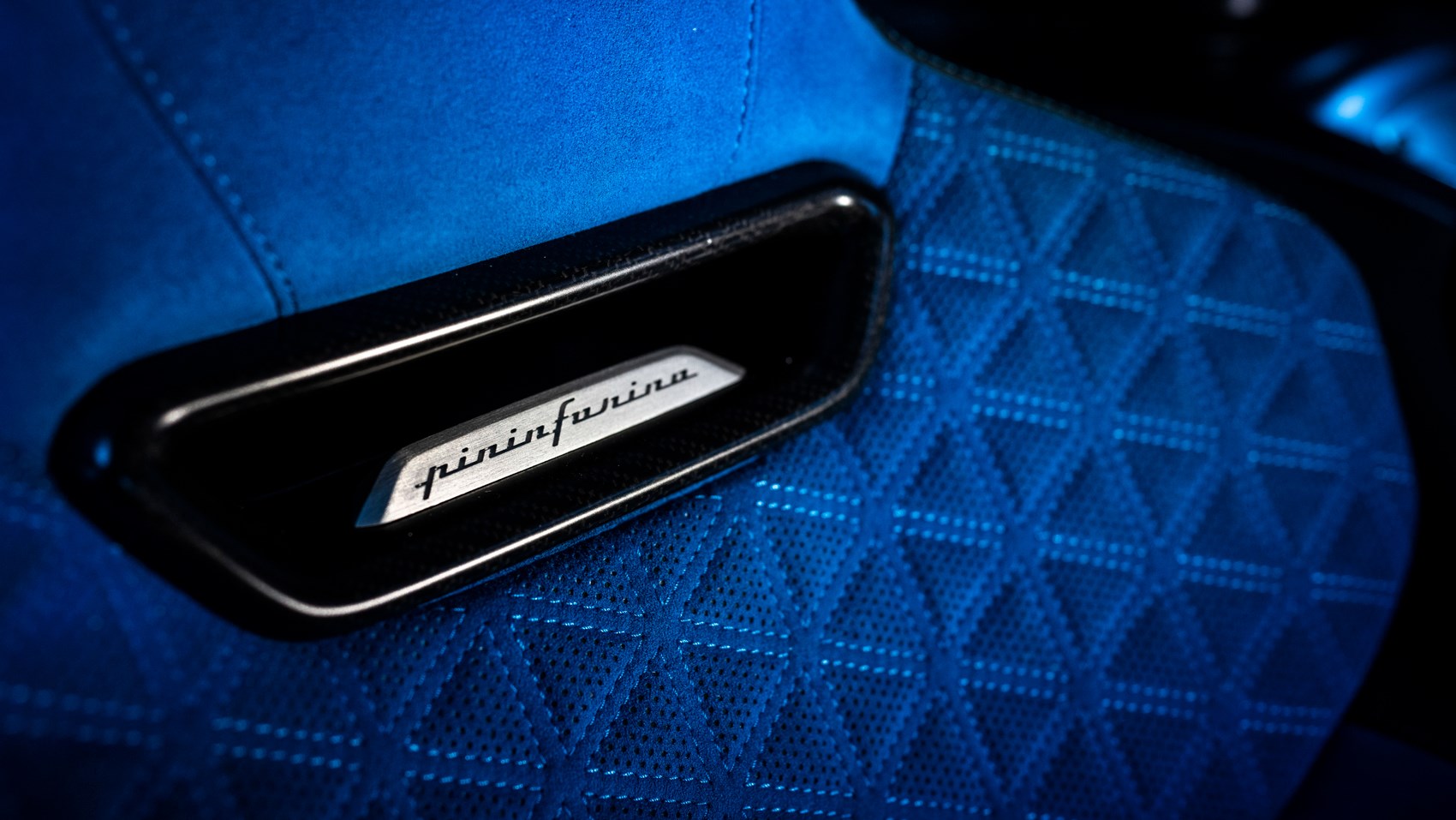
Now Pininfarina SpA continues as a business-to-business venture in Cambiano (Battista’s grandson Paolo is still chairman of Pininfarina SpA), with Automobili Pininfarina the business-to-consumer company operating out of Munich.
Who’s involved?
Per Svantesson (ex Volvo, Valeo and NEVS) has been on board since 2018 (first COO, now CEO), and Luca Borgogno curated the highly attractive design with a team at Pininfarina SpA (he’s been with Pininfarina continuously since 2005, bar a quick dalliance with Lamborghini on the Urus).
Many of the high-profile appointments on the engineering side announced in 2020 seem to have moved on (including Rene Wollmann, former head of Mercedes-AMG Project One development, and Christian Jun, former powertrain director of Porsche’s Mission E project), but engineering boss Paolo Dellacha accompanies us on our drive – he’s ex-Maserati, Alfa, Ferrari, and there are 40 internal engineers, many with experience at big OEMs.
Oh, and Nick Heidfeld has been onboard since day one. Yes, he’s ex-F1, but more pertinently drove for Mahindra Racing in Formula E when it was the next big thing. He brings some celebrity stardust, but also seems genuinely invested in development – not constantly tuning dampers, but dipping in and out regularly to sense-check progress, and he even helped set fundamentals like the seating position and HVAC.
What’s the Battista’s spec?
The spec reads an awful lot like a Rimac Nevera (you know, from the out-of-nowhere Croatian EV hypercar maker) and there’s a reason for that – the Battista effectively is a Nevera under its carbonfibre skin.
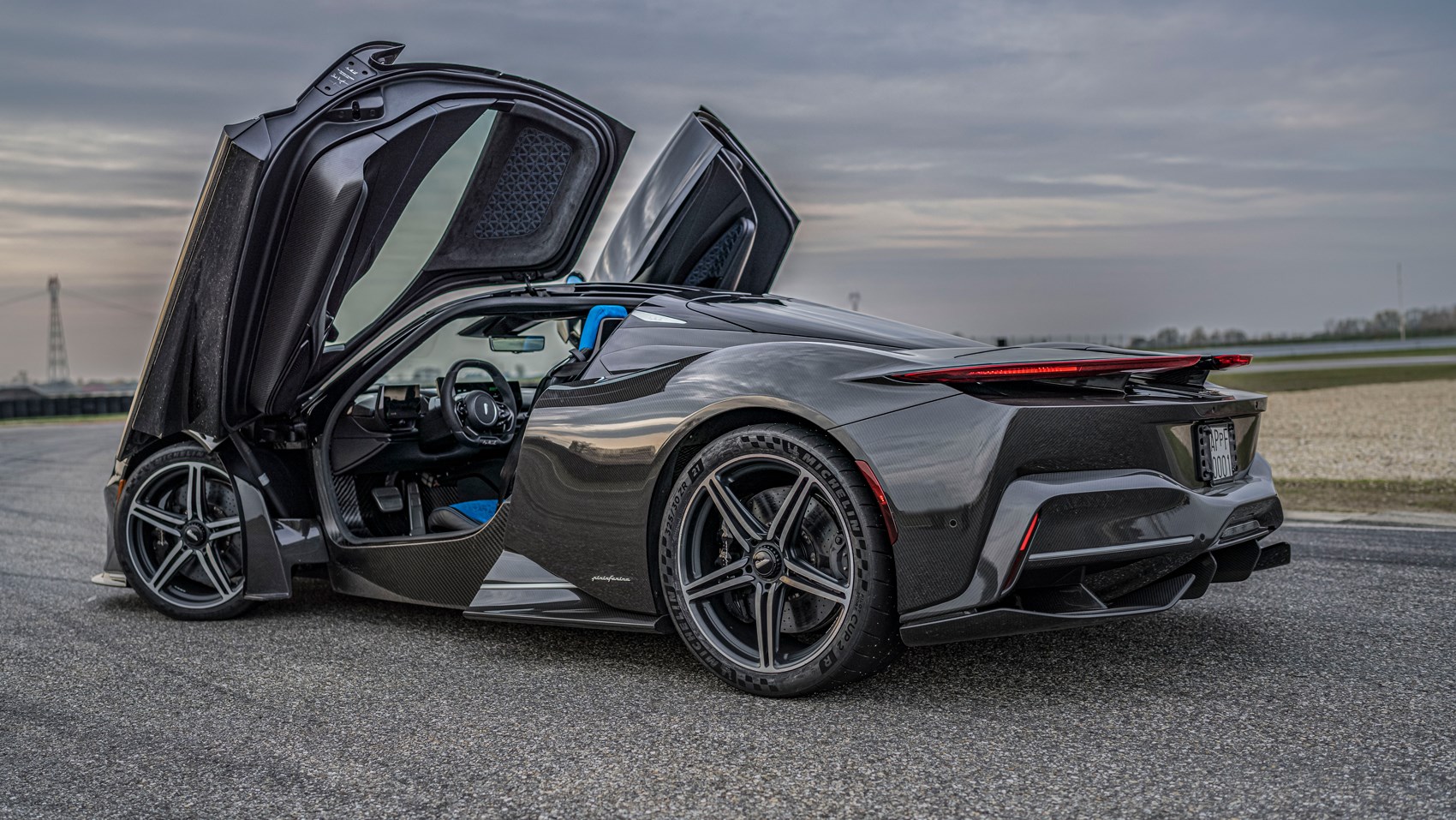
There’s a T-shaped 120kWh lithium/manganese/nickel liquid-cooled battery, which allows the Battista to cruise for up to a claimed 320 miles, and for the seats to sit down low either side of it. There’s also a carbonfibre passenger cell with aluminium crash structures front and rear, plus double-wishbone suspension all-round and 390mm six-piston carbon-ceramic discs front and rear. The large power numbers come courtesy of four e-motors which provide all-wheel drive – each axle has two e-motors, with each axle controlled by its own single-speed gearbox.
The total power output of 1874bhp is biased 1207bhp towards the rear, and there’s torque vectoring to adjust power delivery to grip and cornering requirements, and naturally the motors also recuperate energy under deceleration. But if the big numbers give you the fear (and they should) you can ease yourself in through five driving modes: Calma (402bhp), Pura (999bhp), Energica (1341bhp), Furiosa (1877bhp), or an individual Carattere mode that lets you bundle your preferred settings for steering, suspension and power together.
You plug the Battista in via a slot just above the rear numberplate, by the way, and it’s good for 180kW fast charging if you can find one.
Can I have a virtual drive?
No problem. The dihedral door opens to remove a portion of roof like a McLaren, with a chunk of carbonfibre sill you’ll need to climb over – there’s a bit of a limbo dance, but as these things go it’s easy enough, and you find yourself in pleasingly low-set seats. The back of the carbon tub ultimately stops me reclining the seatback quite as far as I would have done, but I’m quite tall and usually drive like I’m in a deckchair.
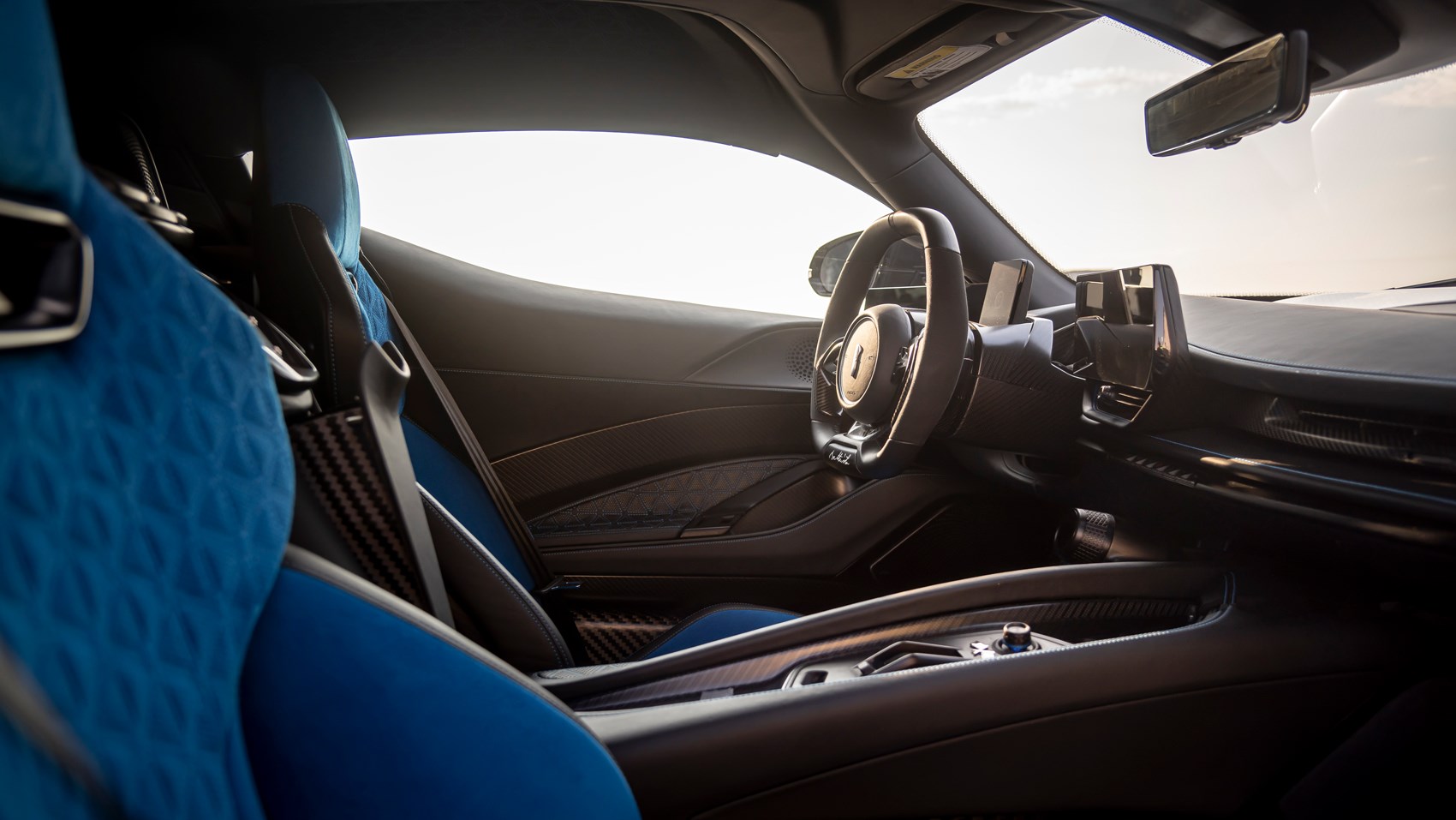
The overall architecture is suitably racey, with the chunky central spine/low seats making you feel ensconced, and the dash is thin and low in the mid-engined style. There’s plush quilting, perfectly aligned carbonfibre and bits of jewellery here and there (though Pagani and Bugatti are in another league) and this is a driver-centric cabin – two rotary dials at elbow-height either side of the steering wheel control the P, R, N, D functions, and all driving modes, and twin landscape-oriented infotainment screens are angled in a vee either side of a steering wheel shaped like an underinflated tyre, with a portrait screen in the middle. This works well enough, save for the steering wheel blocking a sizeable portion of the screens.
Is it fast?
Fast? You’ve got 1874bhp to play with. This is Roadrunner falling with an anvil fast. In truth every mode bar Calma feels indecently rapid, but in Furiosa it’s just instant ferocity and speed that stretches like elastic, all of it tapped into with just a push of the accelerator. You probably guessed as much.
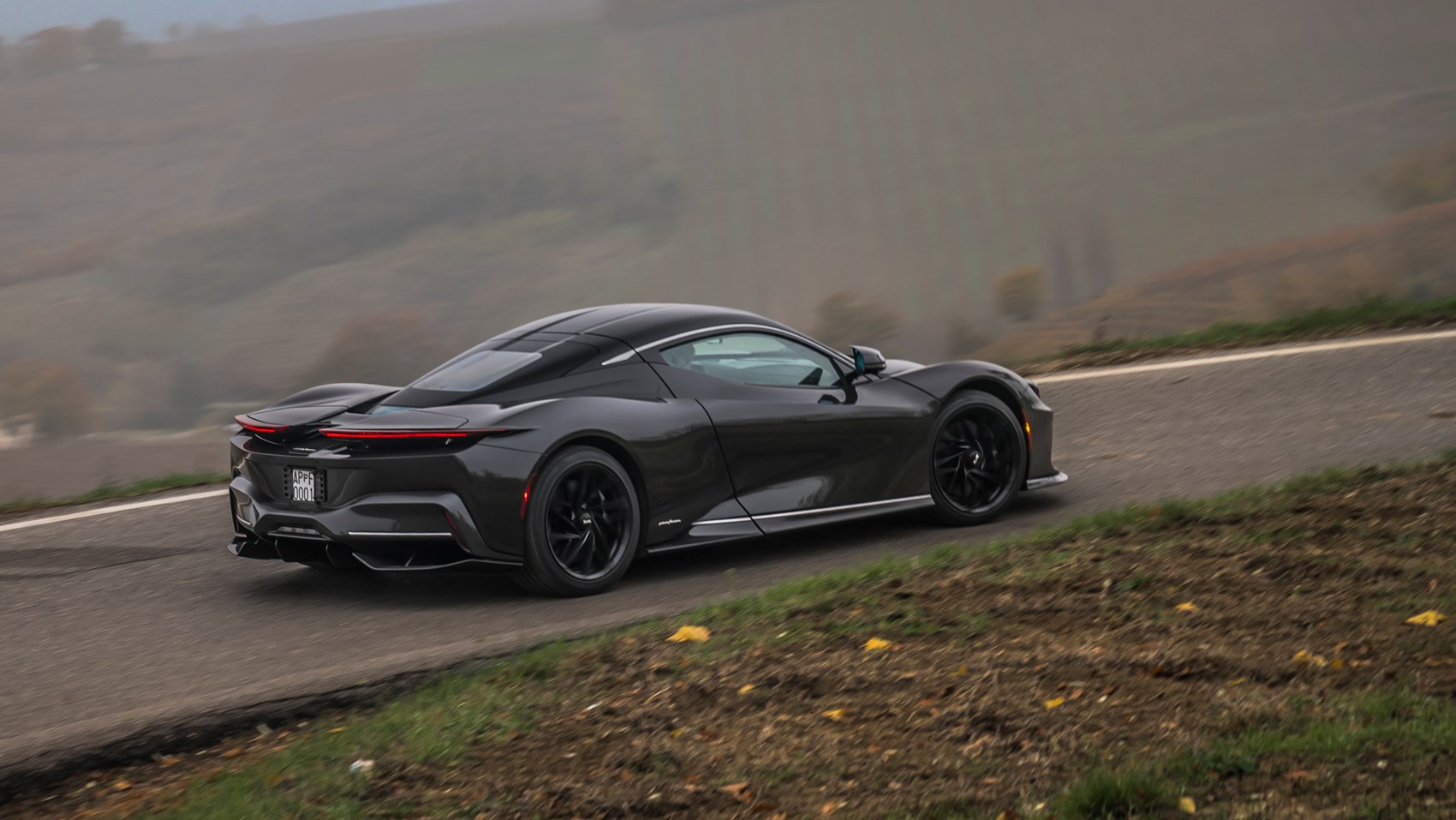
Perhaps more impressive is just how composed the Battista feels while delivering all this – it puts its power down cleanly, the body stays nice and flat, and when you hit really big speeds it doesn’t wander or fidget, just simply squishes into the surface.
Did you drive on track?
Yes, at Circuito Tazio Nuvolari. The way the Battista gobbles up straights with its mix of relentless speed and almost detached calm is just bonkers, and it’s tricky to pick your braking point simply because you gather so much more speed if you leave it to just a fraction later. You don’t even think about the regen now, you just mash the brake pedal because you need to stop fast. Its composure into fast corners is deeply impressive – it grips hard at the front and corners flat, so you can just roll huge amounts of speed in and carry the momentum through – no way does it feel 2.2 tonnes, and the balance is helped by a 48/52 front/rear weight split and the majority weight being so low down.
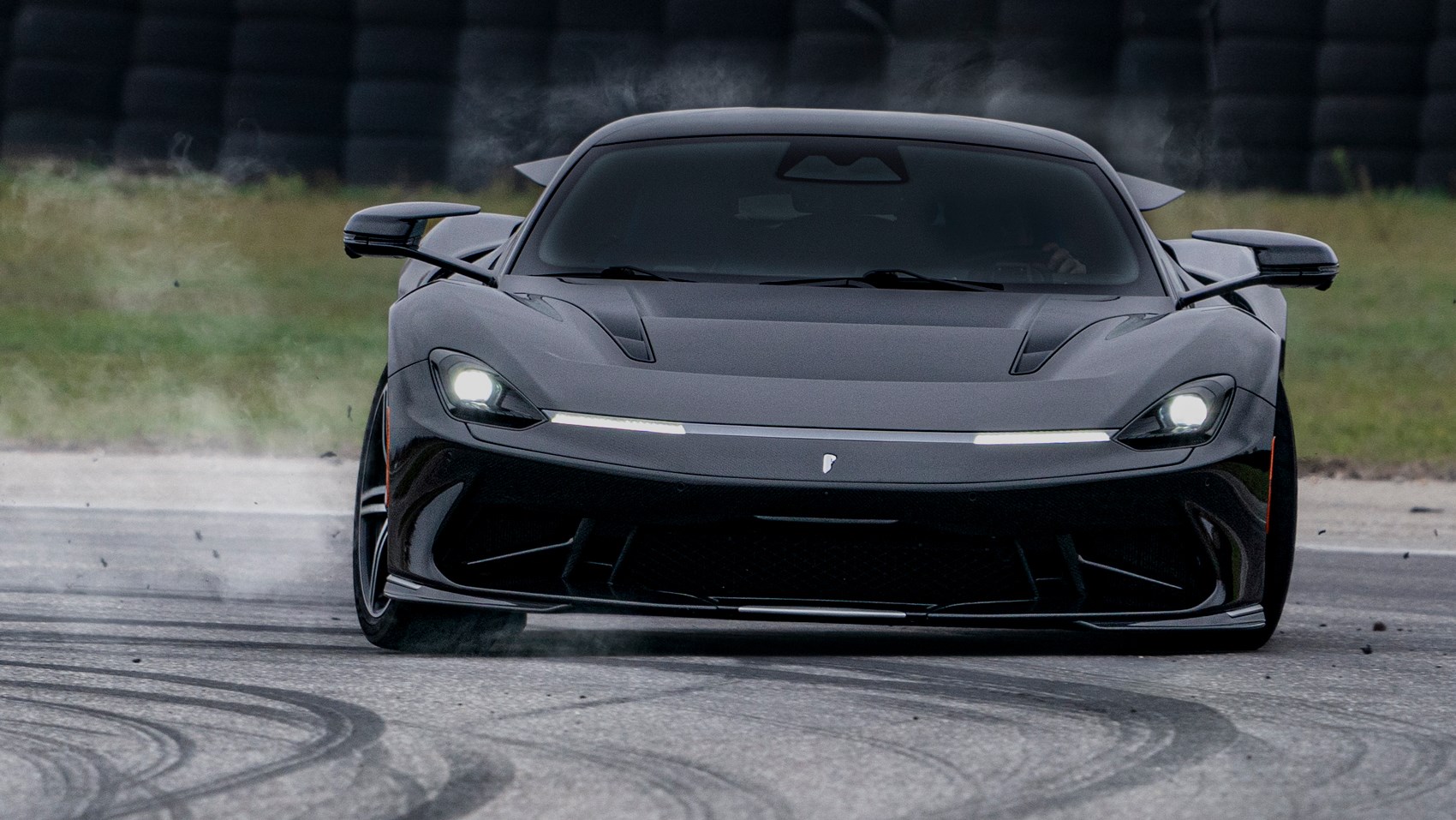
Our first laps were on Michelin Pilot Sport 4S tyres in Energica mode because of colder, slightly damp conditions, and in mid- to slow-speed corners this is a radically different experience to a regular supercar/hypercar – performance is instant, and the torque vectoring can feel a little clunky, more like the tyres are watch mechanisms being wound up than the fluid, progressive movements of a combustion engine sending power to the wheels – you just can’t finesse the throttle in the same way, and I triggered limp mode several times because the software took such a beating.
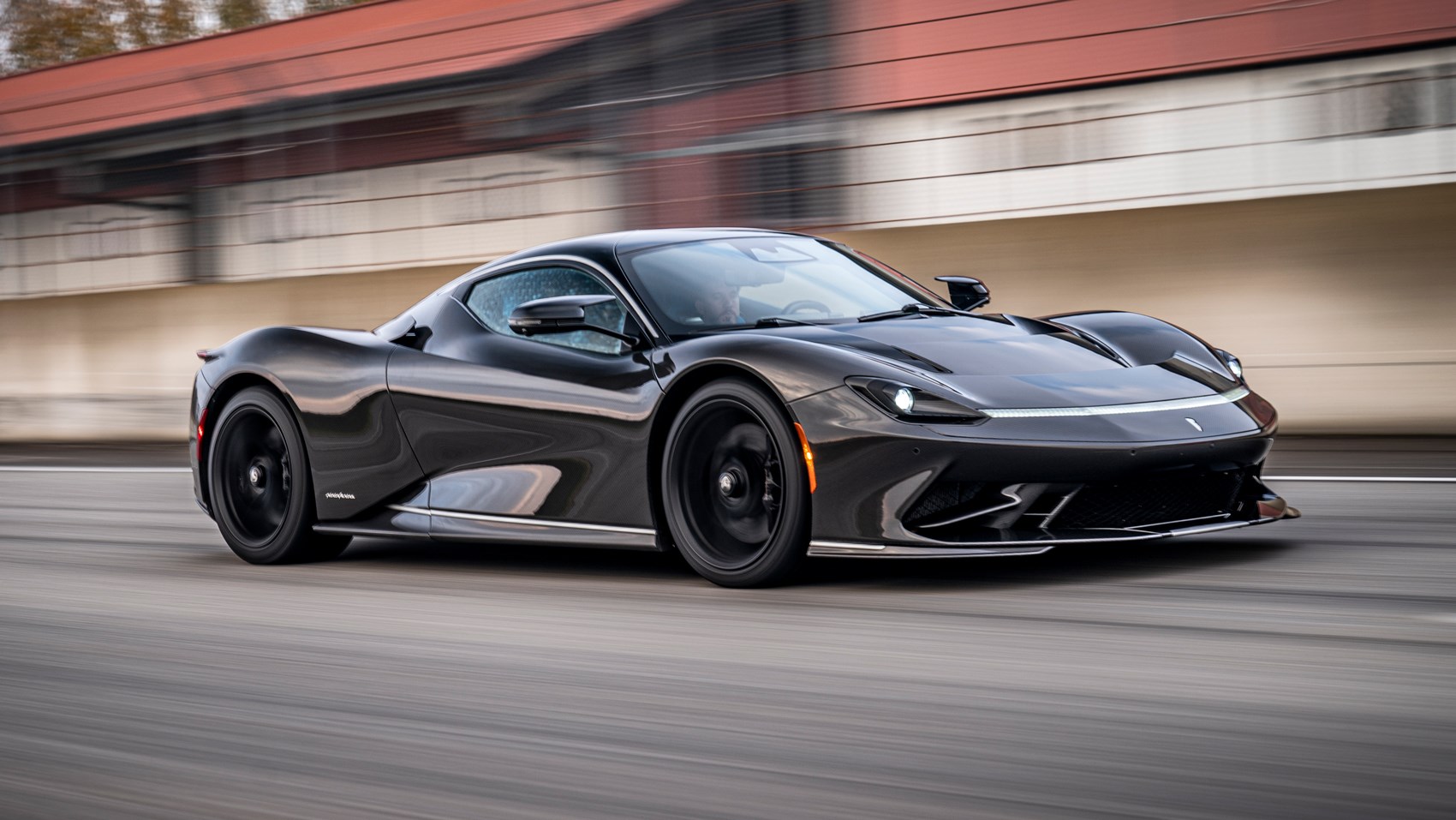
Saying that, the body control and the lack of torque steer given the huge power through the front axle remains deeply impressive, and when we bolted on stickier Cup 2 R tyres, switched to full-bore Furiosa mode and turned all the stability systems off the Battista had far more flow, a sensation of more rear bias (the split actually remains the same, there’s just more power everywhere) and the feeling you could work against the grip more, but things happen in a blink and it’s a heck of a lot to process. In all honesty it’s not a car I’d take to a track day, even a very posh one with very fast cars, and I’d be surprised if any owners did.
Can I daily drive a Battista?
Owners will just jump in one of their 30 other cars, but yes it’s pretty easy-going considering the extravagant performance – the ride is supple, the steering is more light and accurate than feelsome, and the brake pedal bites progressively. The Battista’s not edgy, or grabby, and doesn’t threaten to explode away from every set of traffic lights, so you can just cruise about if you fancy – particularly in the Calma and Pura drive modes. Really the main thing is adjusting to one-pedal driving after a normal car, because the re-gen effect is pretty pronounced.
Boy it feels wide though (it’s actually a little narrower than a Lamborghini Aventador either with or without mirrors), and while visibility is generally good, the huge mirrors hinder vision when you’re trying to peek through tighter turns. Other snags include a lack of isolation between suspension and carbon tub on rougher sections of road, a tiny luggage compartment under the rear window, and odd noises like water swilling around in the cooling system (there are five radiators) when you’re in town, and an artificial soundtrack that pulses deeply and is too prominent to my ears.
Pininfarina Battista: verdict
The Battista delivers performance the likes of which I’ve never experienced – instant, linear, outrageously fast, but marries that with surprising calm and (mostly) civility. Automobili Pininfarina bills the Battista as a ‘pure electric hyper GT’ and that pretty much nails it – it’s at its best lunging down autobahns, turning heads through town and flowing along (decently wide) cross-country routes, where it proves it can monster the twisties, not just straights.
It’s also capable on track, though slower sections show up the limitations of making such a huge and instant power output flow, and there’s still some finessing to do ahead of production, particularly when it comes to torque vectoring and how that all interacts with the stability systems. With the first production car scheduled for this month, they’ll need to get a shift on.